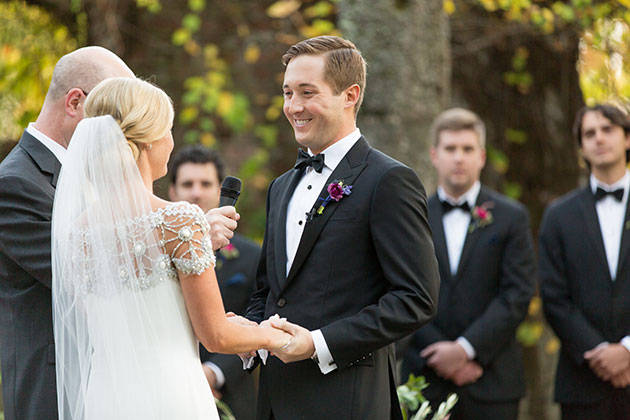
Photo: Getty Images
Once the details are picked, the décor is set, and the guests are seated, it’s time to head down the aisle to begin the wedding ceremony! While we’ve covered all the options you have to get the bride down the aisle, the groom has to get there, too — but how? Our experts have the details on the many ways the groom can get down the aisle at his wedding ceremony.
How the groom walks down the aisle (and with whom) often depends on the type of ceremony the couple is having, including both any religious affiliations and the formality.
In a traditional Jewish ceremony, the groom walks down the aisle behind the officiant, escorted by both his mother and his father. He then waits outside of the chuppah to greet his bride, while his parents take their place beneath the chuppah.
For a traditional Catholic wedding, the officiant will lead the groom, followed by the groomsmen. They may enter from the side and simply walk to their places at the altar, or they may walk down the aisle, with the officiant leading the way.
See more: The Ultimate Guide to the Wedding Processional Order
In a Hindu wedding, the groom makes a grand entrance during the baraat, where he arrives on a highly-decorated horse accompanied by his family and they all are welcomed by the bride’s family. Then the bride’s parents escort the groom to the mandap, where the ceremony takes place.
You have a number of other options to consider, too. The groom may opt to escort his mother down the aisle and to her seat in the front row, followed closely behind by the groom’s father. This gives the groom an opportunity to give his parents a hug before taking his place at the altar. The groom’s parents can also walk down the aisle together, followed by the groom as he walks alone. And of course, the bride and groom can create their own tradition and choose to walk down the aisle together, symbolizing the beginning of their journey as a couple!
